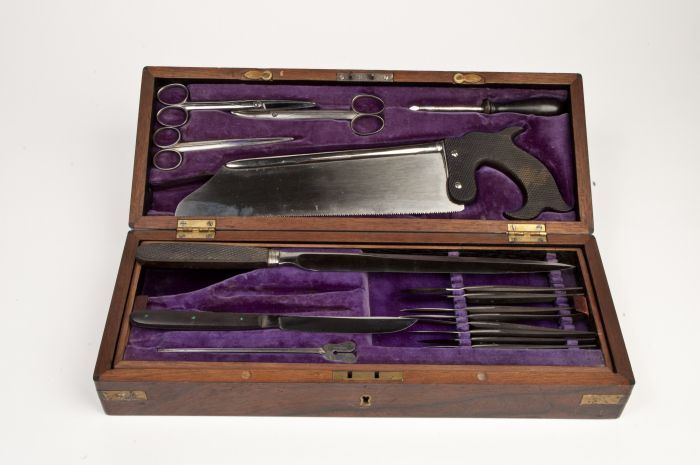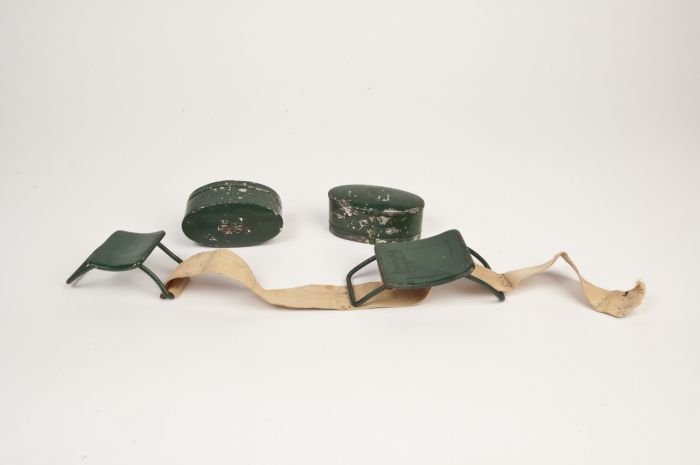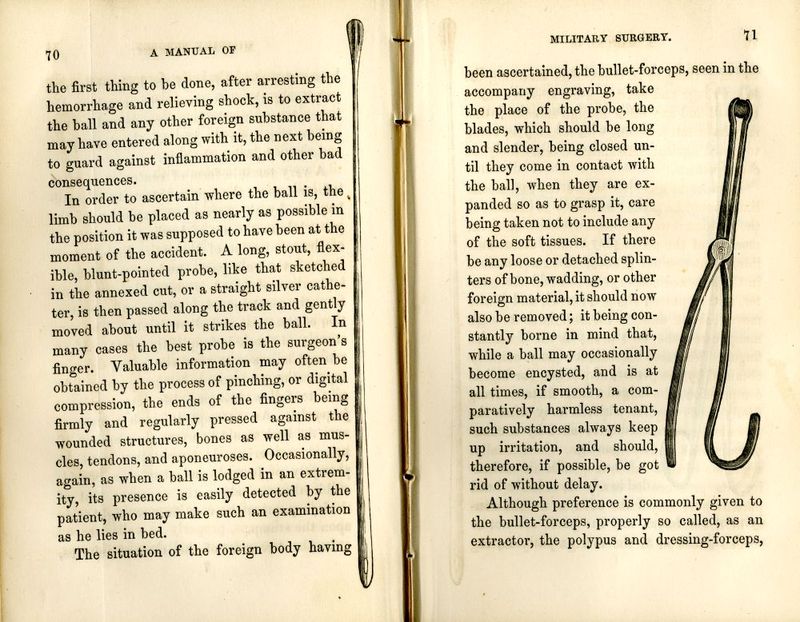The Battlefield Surgery and Surgical Care
United States Navy surgical and amputation kit, circa 1860
Wood; brass; nickel plated steel; velvet
Manufactured by Leach & Greene [case], Walthers & Company [capital saw & liston knife], Luer [scalpels & scissors], Charriere [scalpel]
Donated by Charles Hubbard III, 2006
Warren Anatomical Museum, Francis A. Countway Library of Medicine [WAM 20141]
These instruments were used by Union Navy Assistant Surgeon and 1861 Harvard Medical School graduate Charles Thatcher Hubbard aboard the USS Unadilla during the American Civil War. The Unadilla was one of the Union’s 23 “90 day gunboats” and was involved in several blockades and engagements off the Southeast coast of the United States. The ship and its surgeon participated in the capture of Fort Walker and Fort Beauregard in Port Royal Sound, South Carolina and the blockade of Charlestown. The various manufactures in the surgical kit suggest an active surgery with constant replacing of instruments due to use, breakage, and loss.
Soldier’s field tourniquet, 1860-1870
Tin; canvas; metal
Manufacturer unknown
Donated by Richard M. Hodges, M.D., 1870
Warren Anatomical Museum, Francis A. Countway Library of Medicine [WAM 03138]
This tourniquet was invented during the American Civil War for the personal use of soldiers. Large numbers of these tourniquets were manufactured and supplied to the war’s participants.
Samuel D. Gross (1805-1884)
"A Manual of Military Surgery; or, Hints on the Emergencies of Field, Camp and Hospital Practice"
(Philadelphia : J. B. Lippincott & Co., 1861)
Deposited by the Boston Public Library with the Boston Medical Library, 1906.
S. D. Gross, professor of surgery at the Jefferson Medical College in Philadelphia, was one of the country’s foremost operative surgeons. He designed this brief textbook on field surgery “for emergencies: portable, easy of reference, always at hand.” A Confederate version also appeared in 1861. The woodcuts depict a probe and bullet-forceps.
S. Weir Mitchell (1829-1914)
"The Autobiography of a Quack : and the Case of George Dedlow"
(New York : Century, 1900).
From the collections of the Boston Medical Library.
This tale of a Civil War soldier, George Dedlow, who loses both his arms and his legs but continues to experience sensation in his missing limbs—the “phantom limb” phenomenon—was written by Silas Weir Mitchell and grew out of his experience with neurological injuries seen at the Turner’s Lane Hospital in Philadelphia. The story was published anonymously in the Atlantic Monthly in 1866 and then reprinted in this volume thirty years later. Mitchell, in his introduction to this printing, says, “It was at once accepted by many as the description of a real case. Money was collected in several places to assist the unfortunate man, and benevolent persons went to the ‘Stump Hospital,’ in Philadelphia, to see the sufferer and offer him aid. The spiritual incident at the end of the story was received with joy by the spiritualists as a valuable proof of the truth of their beliefs.”




